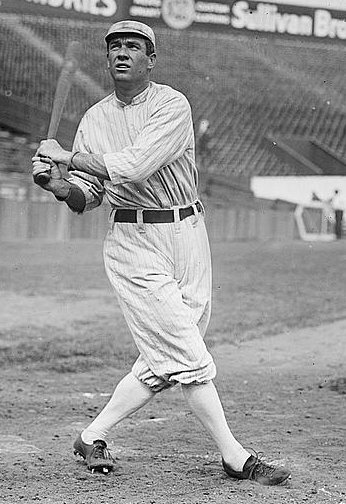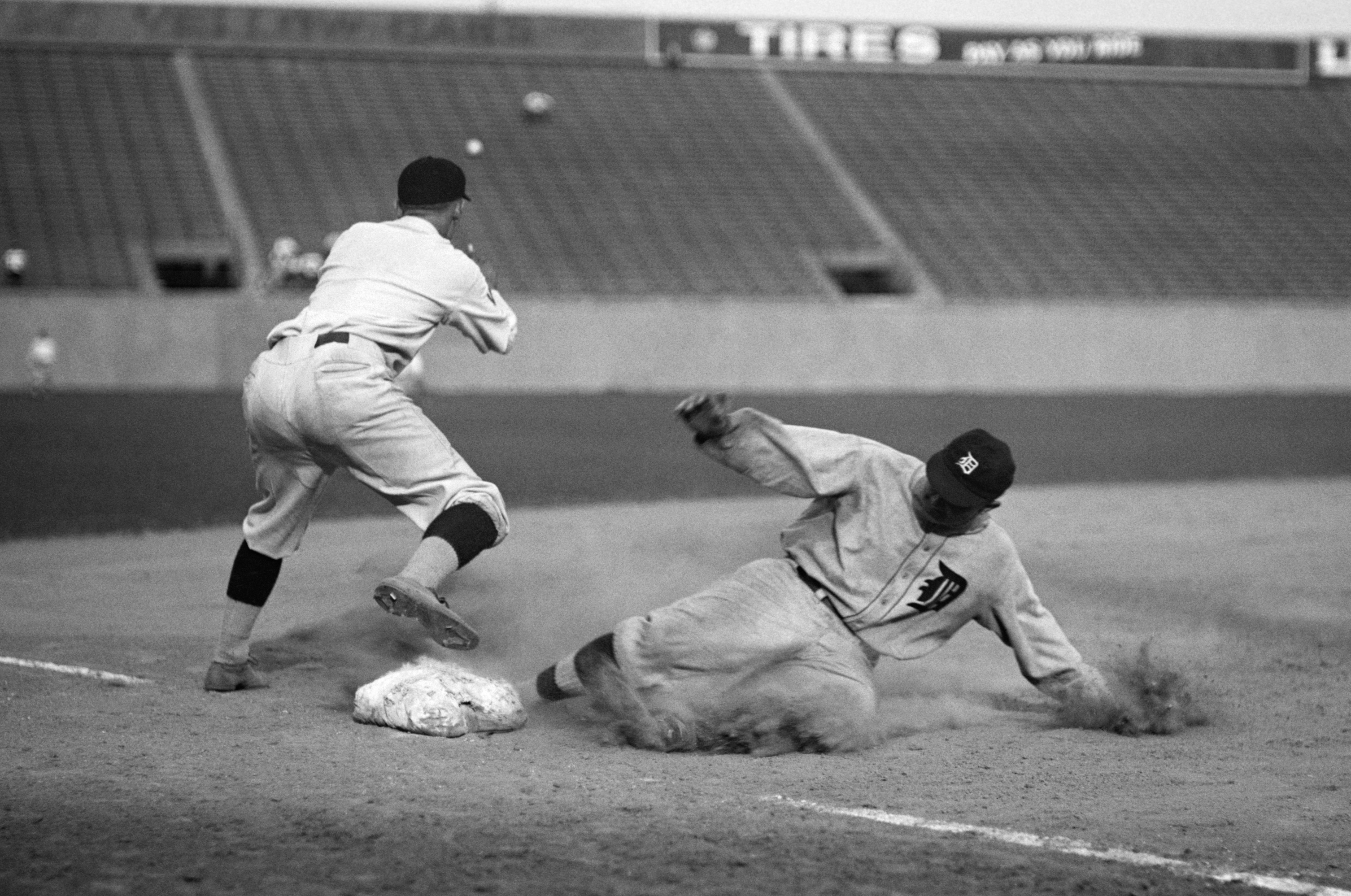|
Ashley Hansen (softball)
Ashley Elizabeth Hansen Church (born May 5, 1990) is an American, former collegiate All-American, right-handed softball player originally from Chandler, Arizona. Hansen played at Stanford University from 2009 to 2012 as a shortstop and is the school doubles leader and also ranks top-5 in the Pac-12 Conference and the NCAA Division I for the career category. Playing career She was a four-time First Team All-Pac-12 player and was also named the Newcomer of the Year (2009), Player of the Year (2011) and Defensive Player of The Year (2012) during her career. She was named the 2011 USA Softball Collegiate Player of the Year. She was then only the second position player to win the award, along with UCLA's Stacey Nuveman in 2002. Hansen also played on the US National Team in 2009 and 2010. Hansen helped team USA win the gold medal at the 2010 ISF Women's World Championship The 2010 ISF Women's World Championship was an international softball competition being held at ''Estadio La ... [...More Info...] [...Related Items...] OR: [Wikipedia] [Google] [Baidu] |
Chandler, Arizona
Chandler is a city in Maricopa County, Arizona, United States, and a suburb in the Phoenix-Mesa-Chandler Metropolitan Statistical Area (MSA). It is bordered to the north and west by Tempe, to the north by Mesa, to the west by Phoenix, to the south by the Gila River Indian Community, and to the east by Gilbert. As of the 2020 census, the population of Chandler was 275,987, up from 236,123 at the 2010 census. History In 1891, Dr. Alexander John Chandler, the first veterinary surgeon in Arizona Territory, settled on a ranch south of Mesa, studying irrigation engineering. By 1900, he had acquired of land, and began drawing up plans for a townsite on what was then known as the Chandler Ranch. The townsite office opened on May 16, 1912. (Soon after celebrating Chandler's Centennial on May 17, 2012, Chandler Museum staff discovered that the city had been celebrating the wrong date. In May 1912, the ''Chandler Arizonan'' newspaper had erroneously published the founding day as M ... [...More Info...] [...Related Items...] OR: [Wikipedia] [Google] [Baidu] |
At Bats
In baseball, an at bat (AB) or time at bat is a batter's turn batting against a pitcher. An at bat is different from a plate appearance. A batter is credited with a plate appearance regardless of what happens during their turn at bat, but a batter is credited with an at bat only if that plate appearance does not have one of the results enumerated below. While at bats are used to calculate certain statistics, including batting average and slugging percentage, a player can qualify for the season-ending rankings in these categories only if they accumulate 502 plate appearances during the season. Batters will not receive credit for an at bat if their plate appearances end under the following circumstances: * They receive a base on balls (BB).In 1887, Major League Baseball counted bases on balls as hits (and thus as at-bats). The result was high batting averages, including some near .500, and the experiment was abandoned the following season. * They are hit by a pitch (HBP). * Th ... [...More Info...] [...Related Items...] OR: [Wikipedia] [Google] [Baidu] |
1990 Births
Year 199 ( CXCIX) was a common year starting on Monday (link will display the full calendar) of the Julian calendar. At the time, it was sometimes known as year 952 ''Ab urbe condita''. The denomination 199 for this year has been used since the early medieval period, when the Anno Domini calendar era became the prevalent method in Europe for naming years. Events By place Roman Empire * Mesopotamia is partitioned into two Roman provinces divided by the Euphrates, Mesopotamia and Osroene. * Emperor Septimius Severus lays siege to the city-state Hatra in Central-Mesopotamia, but fails to capture the city despite breaching the walls. * Two new legions, I Parthica and III Parthica, are formed as a permanent garrison. China * Battle of Yijing: Chinese warlord Yuan Shao defeats Gongsun Zan. Korea * Geodeung succeeds Suro of Geumgwan Gaya, as king of the Korean kingdom of Gaya (traditional date). By topic Religion * Pope Zephyrinus succeeds Pope Victor I, ... [...More Info...] [...Related Items...] OR: [Wikipedia] [Google] [Baidu] |
Stolen Base
In baseball, a stolen base occurs when a runner advances to a base to which they are not entitled and the official scorer rules that the advance should be credited to the action of the runner. The umpires determine whether the runner is safe or out at the next base, but the official scorer rules on the question of credit or blame for the advance under Rule 10 (Rules of Scoring) of the MLB's Official Rules. A stolen base most often occurs when a base runner advances to the next base while the pitcher is pitching the ball to home plate. Successful base stealers are not only fast but have good base-running instincts and timing. Background Ned Cuthbert, playing for the Philadelphia Keystones in either 1863 or 1865, was the first player to steal a base in a baseball game, although the term ''stolen base'' was not used until 1870. For a time in the 19th century, stolen bases were credited when a baserunner reached an extra base on a base hit from another player. For example, i ... [...More Info...] [...Related Items...] OR: [Wikipedia] [Google] [Baidu] |
Strikeout
In baseball or softball, a strikeout (or strike-out) occurs when a batter accumulates three strikes during a time at bat. It usually means that the batter is out. A strikeout is a statistic recorded for both pitchers and batters, and is denoted by K in scorekeeping and statistics. A "strikeout looking" — in which the batter does not swing and the third strike is called by the umpire — is usually denoted by a ꓘ. Although a strikeout suggests that the pitcher dominated the batter, the free-swinging style that generates home runs also leaves batters susceptible to striking out. Some of the greatest home run hitters of all time—such as Alex Rodriguez, Reggie Jackson, and Jim Thome—were notorious for striking out. Rules and jargon A pitched ball is ruled a ''ball'' by the umpire if the batter did not swing at it and, in that umpire's judgement, it does not pass through the strike zone. Any pitch at which the batter swings unsuccessfully or, that in that umpire' ... [...More Info...] [...Related Items...] OR: [Wikipedia] [Google] [Baidu] |
Base On Balls
A base on balls (BB), also known as a walk, occurs in baseball when a batter receives four pitches that the umpire calls '' balls'', and is in turn awarded first base without the possibility of being called out. The base on balls is defined in Section 2.00 of baseball's Official Rules, and further detail is given in 6.08(a). It is considered a faux pas for a professional player to literally walk to first base; the batter-runner and any advancing runners normally jog on such a play. The term "base on balls" distinguishes a walk from the other manners in which a batter can be awarded first base without liability to be put out (e.g., hit by pitch (HBP), catcher's interference). Though a base on balls, catcher's interference, or a batter hit by a pitched ball all result in the batter (and possibly runners on base) being awarded a base, the term "walk" usually refers only to a base on balls, and not the other methods of reaching base without the bat touching the ball. An importan ... [...More Info...] [...Related Items...] OR: [Wikipedia] [Google] [Baidu] |
Slugging Percentage
In baseball statistics, slugging percentage (SLG) is a measure of the batting productivity of a hitter. It is calculated as total bases divided by at bats, through the following formula, where ''AB'' is the number of at bats for a given player, and ''1B'', ''2B'', ''3B'', and ''HR'' are the number of singles, doubles, triples, and home runs, respectively: : \mathrm = \frac Unlike batting average, slugging percentage gives more weight to extra-base hits such as doubles and home runs, relative to singles. Plate appearances resulting in walks, hit-by-pitches, catcher's interference, and sacrifice bunts or flies are specifically excluded from this calculation, as such an appearance is not counted as an at bat (these are not factored into batting average either). The name is a misnomer, as the statistic is not a percentage but an average of how many bases a player achieves per at bat. It is a scale of measure whose computed value is a number from 0 to 4. This might not ... [...More Info...] [...Related Items...] OR: [Wikipedia] [Google] [Baidu] |
Total Bases
In baseball statistics, total bases is the number of bases a player gains with hits. It is a weighted sum with values of 1 for a single, 2 for a double, 3 for a triple and 4 for a home run. For example, three singles is three total bases, while a double and a home run is six total bases. Only bases attained from hits count toward this total. Reaching base by other means (such as a base on balls) or advancing further after the hit (such as when a subsequent batter gets a hit) does not increase the player's total bases. In box scores and other statistical summaries, total bases is often denoted by the abbreviation TB. The total bases divided by the number of at bats is the player's slugging percentage. Records Hank Aaron's 6,856 career total bases make him the all-time MLB record holder. Having spent the majority of his career playing in the National League, he also holds that league's record with 6,591 total bases. Aaron hit for 300 or more total bases in a record 15 dif ... [...More Info...] [...Related Items...] OR: [Wikipedia] [Google] [Baidu] |
Double (baseball)
In baseball, a double is the act of a batter striking the pitched ball and safely reaching second base without being called out by the umpire, without the benefit of a fielder's misplay (see error) or another runner being put out on a fielder's choice. A double is a type of hit (the others being the single, triple and home run) and is sometimes called a "two-bagger" or "two-base hit". For statistical and scorekeeping purposes it is denoted by 2B. Description Typically, a double is a well-hit ball into the outfield that finds the "gap" between the center fielder and one of the corner outfielders, bounces off the outfield wall and down into the field of play, or is hit up one of the two foul lines. To hit many doubles, a batter must have decent hitting skill and power; it also helps to run well enough to beat an outfield throw. Doubles typically drive in runs from third base, second base, and even from first base at times. When total bases and slugging percentages ... [...More Info...] [...Related Items...] OR: [Wikipedia] [Google] [Baidu] |
Triple (baseball)
In baseball, a triple is the act of a batter safely reaching third base after hitting the ball, with neither the benefit of a fielder's misplay (see error) nor another runner being put out on a fielder's choice. A triple is sometimes called a "three-bagger" or "three-base hit". For statistical and scorekeeping purposes it is denoted by 3B. Triples have become somewhat rare in Major League Baseball, less common than both the double and the home run. This is because it requires a ball to be hit solidly to a distant part of the field (ordinarily a line drive or fly ball near the foul line closest to right field), or the ball to take an irregular bounce in the outfield, usually against the wall, away from a fielder. It also requires the batter's team to have a good strategic reason for wanting the batter on third base, as a stand-up double is sufficient to put the batter in scoring position and there will often be little strategic advantage to risk being tagged out whils ... [...More Info...] [...Related Items...] OR: [Wikipedia] [Google] [Baidu] |
Home Runs
In baseball, a home run (abbreviated HR) is scored when the ball is hit in such a way that the batter is able to circle the bases and reach home plate safely in one play without any errors being committed by the defensive team. A home run is usually achieved by hitting the ball over the outfield fence between the foul poles (or hitting either foul pole) without the ball touching the field. Far less common is the " inside-the-park" home run where the batter reaches home safely while the baseball is in play on the field. When a home run is scored, the batter is credited with a hit and a run scored, and a run batted in (RBI) for each runner that scores, including himself. Likewise, the pitcher is recorded as having given up a hit and a run, with additional runs charged for each runner that scores other than the batter. Home runs are among the most popular aspects of baseball and, as a result, prolific home run hitters are usually the most popular among fans and consequently ... [...More Info...] [...Related Items...] OR: [Wikipedia] [Google] [Baidu] |
Run Batted In
A run batted in (RBI; plural RBIs ) is a statistic in baseball and softball that credits a batter for making a play that allows a run to be scored (except in certain situations such as when an error is made on the play). For example, if the batter bats a base hit which allows a teammate on a higher base to reach home and so score a run, then the batter gets credited with an RBI. Before the 1920 Major League Baseball season, runs batted in were not an official baseball statistic. Nevertheless, the RBI statistic was tabulated—unofficially—from 1907 through 1919 by baseball writer Ernie Lanigan, according to the Society for American Baseball Research. Common nicknames for an RBI include "ribby" (or "ribbie"), "rib", and "ribeye". The plural of "RBI" is a matter of "(very) minor controversy" for baseball fans:; it is usually "RBIs", in accordance with the usual practice for pluralizing initialisms in English; however, some sources use "RBI" as the plural, on the basis tha ... [...More Info...] [...Related Items...] OR: [Wikipedia] [Google] [Baidu] |

.jpg)





